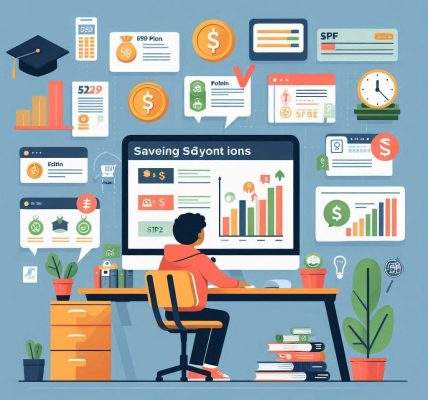Introduction
Saving money is a fundamental step toward financial security, but many people struggle with consistency. Unexpected expenses, lifestyle choices, and even forgetfulness can derail even the best-intentioned savers. The easiest way to ensure a steady financial future is by automating your savings.
By setting up automatic savings contributions, you eliminate the stress of manual transfers and develop a sustainable habit of wealth accumulation. In this guide, we will explore the benefits of automating your savings, the best methods to implement it, and how you can maximize your returns effortlessly.
Why Automate Your Savings?
Automating your savings is more than just a convenience—it’s a proven strategy for financial success. Here’s why it works so well:
- Consistency: Automated savings ensure you put aside money regularly without relying on willpower.
- Time-Saving: Once set up, automation eliminates the need for manual transfers, saving you time and effort.
- Less Temptation to Spend: If savings are deducted before you even see your paycheck, you’re less likely to spend the money impulsively.
- Takes Advantage of Compound Interest: Regular contributions allow your savings to grow exponentially over time.
- Helps You Reach Financial Goals Faster: Whether it’s an emergency fund, retirement savings, or a vacation fund, automating your savings keeps you on track.
Steps to Automate Your Savings
1. Set a Savings Goal
Before you automate your savings, determine what you’re saving for. Common goals include:
- Building an emergency fund
- Saving for a down payment on a house
- Contributing to retirement
- Planning a vacation
- Paying off debt
Having clear goals will help you decide how much to save and where to allocate your funds.
2. Choose the Right Savings Account
Selecting the right savings vehicle is essential for maximizing your returns. Consider these options:
- High-Yield Savings Accounts: Offers higher interest rates than traditional savings accounts.
- Certificates of Deposit (CDs): Locking in your funds for a fixed term can yield better interest rates.
- Retirement Accounts (401(k) or IRA): Automate contributions to benefit from employer matching and tax advantages.
- Investment Accounts: Automating deposits into brokerage accounts can help grow your wealth over time.
3. Set Up Automatic Transfers
Most banks and financial institutions allow you to schedule automatic transfers from your checking account to your savings account. Choose a frequency that aligns with your income cycle—weekly, bi-weekly, or monthly.
4. Use Employer Payroll Deductions
Many employers allow direct deposit into multiple accounts. Allocate a percentage of your paycheck directly into a savings or retirement account before you even see the money.
5. Automate Retirement Contributions
If your employer offers a 401(k) plan, enroll in automatic contributions. Many employers also provide matching contributions, which is essentially free money for your future.
6. Set Up Round-Up Savings Programs
Many banks and financial apps offer round-up savings programs. Every time you make a purchase, the transaction is rounded up to the nearest dollar, and the difference is automatically transferred to your savings account.
7. Leverage Budgeting Apps
Apps like Mint, YNAB, and Acorns help track spending and automate savings based on your spending habits. These tools can analyze your financial activity and suggest savings contributions without requiring manual adjustments.
Maximizing Automated Savings
1. Start Small and Increase Over Time
If you’re new to saving, start with a small amount—maybe 5% of your income—and gradually increase it as your finances allow.
2. Adjust for Cost-of-Living Increases
Whenever you get a raise, increase your savings contribution instead of inflating your lifestyle.
3. Use Multiple Savings Buckets
Rather than dumping all your savings into one account, designate separate accounts for different goals, such as an emergency fund, a travel fund, or a home purchase.
4. Review and Adjust Periodically
Check your automated savings plan every few months to ensure it aligns with your financial goals. Adjust contributions if necessary based on changes in your income and expenses.
Overcoming Common Challenges
1. Not Having Enough Income to Save
If your income barely covers your expenses, start small. Even saving $10 a week can make a difference over time.
2. Unexpected Expenses
Maintain an emergency fund to cover sudden expenses so you don’t have to dip into long-term savings.
3. Forgetting About Your Savings
While automation is designed to be hands-off, periodically reviewing your savings progress ensures you’re on track.
Conclusion
Automating your savings is one of the simplest and most effective ways to build wealth over time. It eliminates human error, encourages discipline, and allows your money to grow effortlessly. By implementing automated transfers, employer deductions, and budgeting apps, you can ensure a stable financial future without extra effort. Start automating your savings today and take control of your financial future!




